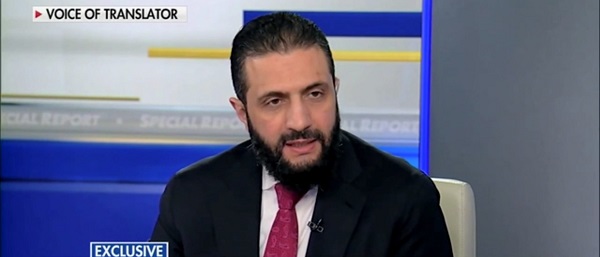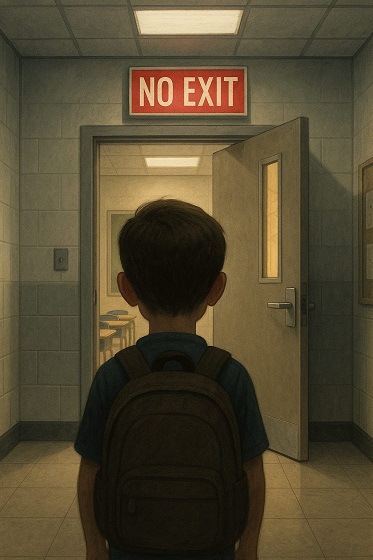Brownstone Institute
The White House Makes Good on Its Antitrust Threats

From the Brownstone Institute
BY
On May 5, 2021, White House press secretary Jen Psaki issued a mob-like warning to social-media companies and information distributors generally. They need to get with the program and start censoring critics of Covid policy. They need to amplify government propaganda. After all, it would be a shame if something would happen to these companies.
These were her exact words:
The president’s view is that the major platforms have a responsibility related to the health and safety of all Americans to stop amplifying untrustworthy content, disinformation and misinformation, especially related to Covid-19 vaccinations and elections. And we’ve seen that over the past several months. Broadly speaking, I’m not placing any blame on any individual or group. We’ve seen it from a number of sources. He also supports better privacy protections and a robust antitrust program. So, his view is that there’s more that needs to be done to ensure that this type of misinformation, disinformation, damaging, sometimes life threatening information is not going out to the American public.
On the face of it, the antitrust action against Apple is about their secure communications network. The Justice Department wants the company to share their services with other networks. As with so many other antitrust actions in history, this is really about the government’s taking sides in competitive disputes between companies, in this case Samsung and other smartphone providers. They resent the way Apple products all work together. They want that changed.
The very notion that the government is trying to protect consumers in this case is preposterous. Apple is a success not because they are exploitative but because they make products that users like, and they like them so much that they buy ever more. It’s not uncommon that a person gets an iPhone and then a Macbook, an iPad, and then AirPods. All play well together.
The Justice Department calls this anticompetitive even though competing is exactly the source of Apple’s market strength. That has always been true. Yes, there is every reason to be annoyed at the company’s hammer-and-tongs enforcement of its intellectual property. But their IP is not the driving force of the company’s success. Its products and services are.
Beyond that, there is a darker agenda here. It’s about bringing new media into the government propaganda fold, exactly as Psaki threatened. Apple is a main distributor of podcasts in the country and world, just behind Spotify (which is foreign controlled). There are 120 million podcast listeners in the US, far more than pay attention to regime media in total.
If the ambition is to control the public mind, something must be done to get those under control. It’s not enough just to nationalize Facebook and Google. If the purpose is to end free speech as we know it, they have to go after podcasting too, using every tool that is available.
Antitrust is one tool they have. The other is the implicit threat to take away Section 230 that grants legal liability to social networks that immunize them against what would otherwise be a torrent of litigation. These are the two main guns that government can hold to the head of these private communications companies. Apple is the target in order to make the company more compliant.
All of which gets us to the issue of the First Amendment. There are many ways to violate laws on free speech. It’s not just about sending a direct note with a built-in threat. You can use third parties. You can invoke implicit threats. You can depend on the awareness that, after all, you are the government so it is hardly a level playing field. You can embed employees and pay their salaries (as was the case with Twitter). Or, in the case of Psaki above, you can deploy the mob tactic of reminding companies that bad things may or may not happen if they persist in non-compliance.
Over the last 4 to 6 years, governments have used all these methods to violate free speech rights. We are sitting on tens of thousands of pages of proof of this. What seemed like spotty takedowns of true information has been revealed as a vast machinery now called the Censorship Industrial Complex involving dozens of agencies, nearly one hundred universities, and many foundations and nonprofit organizations directly or indirectly funded by government.
You would have to be willfully blind not to see the long-run ambition. The goal is a mass reversion to the past, a world like we had in the 1970s with three networks and limited information sources about anything going on in government. Back then, people did not know what they did not know. That’s how effective the system was. It came about not entirely because of active censorship but because of technological limitations.
The information age is called that because it blew up the old system, offering hope of a new world of universal distribution of ever more information about everything, and promising to empower billions of users themselves to become distributors. That’s how the company YouTube got its name: everyone could be a TV producer.
That dream was hatched in the 1980s, gained great progress in the 1990s and 2000s, and began fundamentally to upend government structures in the 2010s. Following Brexit and the election of Donald Trump in 2016 – two major events that were not supposed to happen – a deep establishment said that’s enough. They scapegoated the new systems of information for disrupting the plans of decades and reversing the planned course of history.
The ambition to control every nook and cranny of the Internet sounds far-flung but what choice do they have? This is why this machinery of censorship has been constructed and why there is such a push to have artificial intelligence take over the job of content curation. In this case, machines alone do the job without human intervention, making litigation nearly impossible.
The Supreme Court has the chance to do something to stop this but it’s not clear that many Justices even understand the scale of the problem or the Constitutional strictures against it. Some seem to think that this is only about the right of government officials to pick up the phone and complain to reporters about their coverage. That is absolutely not the issue: content curation affects hundreds of millions of people, not just those posting but those reading too.
Still, if there is some concern about the supposed rights of government actors, there is a clear solution offered by David Friedman: post all information and exhortations about topics and content in a public forum. If the Biden or Trump administration has a preference for how social media should behave, it is free to file a ticket like everyone else and the recipient can and should make it and the response public.
This is not an unreasonable suggestion, and it should certainly figure into any judgment made by the Supreme Court. The federal government has always put out press releases. That’s a normal part of functioning. Bombarding private companies with secret takedown notices and otherwise deploying a huge plethora of intimidation tactics should not even be permitted.
Is there muscle behind the growing push for censorship? Certainly there is. This reality is underscored by the Justice Department’s antitrust actions against Apple. The mask of such official actions is now removed.
Just as the FDA and CDC became marketing and enforcement arms of Pfizer and Moderna, so too the Justice Department is now revealed as a censor and industrial promoter of Samsung. This is how captured agencies with hegemonic ambitions operate, not in the public interest but in the private interest of some industries over others and always with the goal of reducing the freedom of the people.
Brownstone Institute
Bizarre Decisions about Nicotine Pouches Lead to the Wrong Products on Shelves

From the Brownstone Institute
A walk through a dozen convenience stores in Montgomery County, Pennsylvania, says a lot about how US nicotine policy actually works. Only about one in eight nicotine-pouch products for sale is legal. The rest are unauthorized—but they’re not all the same. Some are brightly branded, with uncertain ingredients, not approved by any Western regulator, and clearly aimed at impulse buyers. Others—like Sweden’s NOAT—are the opposite: muted, well-made, adult-oriented, and already approved for sale in Europe.
Yet in the United States, NOAT has been told to stop selling. In September 2025, the Food and Drug Administration (FDA) issued the company a warning letter for offering nicotine pouches without marketing authorization. That might make sense if the products were dangerous, but they appear to be among the safest on the market: mild flavors, low nicotine levels, and recyclable paper packaging. In Europe, regulators consider them acceptable. In America, they’re banned. The decision looks, at best, strange—and possibly arbitrary.
What the Market Shows
My October 2025 audit was straightforward. I visited twelve stores and recorded every distinct pouch product visible for sale at the counter. If the item matched one of the twenty ZYN products that the FDA authorized in January, it was counted as legal. Everything else was counted as illegal.
Two of the stores told me they had recently received FDA letters and had already removed most illegal stock. The other ten stores were still dominated by unauthorized products—more than 93 percent of what was on display. Across all twelve locations, about 12 percent of products were legal ZYN, and about 88 percent were not.
The illegal share wasn’t uniform. Many of the unauthorized products were clearly high-nicotine imports with flashy names like Loop, Velo, and Zimo. These products may be fine, but some are probably high in contaminants, and a few often with very high nicotine levels. Others were subdued, plainly meant for adult users. NOAT was a good example of that second group: simple packaging, oat-based filler, restrained flavoring, and branding that makes no effort to look “cool.” It’s the kind of product any regulator serious about harm reduction would welcome.
Enforcement Works
To the FDA’s credit, enforcement does make a difference. The two stores that received official letters quickly pulled their illegal stock. That mirrors the agency’s broader efforts this year: new import alerts to detain unauthorized tobacco products at the border (see also Import Alert 98-06), and hundreds of warning letters to retailers, importers, and distributors.
But effective enforcement can’t solve a supply problem. The list of legal nicotine-pouch products is still extremely short—only a narrow range of ZYN items. Adults who want more variety, or stores that want to meet that demand, inevitably turn to gray-market suppliers. The more limited the legal catalog, the more the illegal market thrives.
Why the NOAT Decision Appears Bizarre
The FDA’s own actions make the situation hard to explain. In January 2025, it authorized twenty ZYN products after finding that they contained far fewer harmful chemicals than cigarettes and could help adult smokers switch. That was progress. But nine months later, the FDA has approved nothing else—while sending a warning letter to NOAT, arguably the least youth-oriented pouch line in the world.
The outcome is bad for legal sellers and public health. ZYN is legal; a handful of clearly risky, high-nicotine imports continue to circulate; and a mild, adult-market brand that meets European safety and labeling rules is banned. Officially, NOAT’s problem is procedural—it lacks a marketing order. But in practical terms, the FDA is punishing the very design choices it claims to value: simplicity, low appeal to minors, and clean ingredients.
This approach also ignores the differences in actual risk. Studies consistently show that nicotine pouches have far fewer toxins than cigarettes and far less variability than many vapes. The biggest pouch concerns are uneven nicotine levels and occasional traces of tobacco-specific nitrosamines, depending on manufacturing quality. The serious contamination issues—heavy metals and inconsistent dosage—belong mostly to disposable vapes, particularly the flood of unregulated imports from China. Treating all “unauthorized” products as equally bad blurs those distinctions and undermines proportional enforcement.
A Better Balance: Enforce Upstream, Widen the Legal Path
My small Montgomery County survey suggests a simple formula for improvement.
First, keep enforcement targeted and focused on suppliers, not just clerks. Warning letters clearly change behavior at the store level, but the biggest impact will come from auditing distributors and importers, and stopping bad shipments before they reach retail shelves.
Second, make compliance easy. A single-page list of authorized nicotine-pouch products—currently the twenty approved ZYN items—should be posted in every store and attached to distributor invoices. Point-of-sale systems can block barcodes for anything not on the list, and retailers could affirm, once a year, that they stock only approved items.
Third, widen the legal lane. The FDA launched a pilot program in September 2025 to speed review of new pouch applications. That program should spell out exactly what evidence is needed—chemical data, toxicology, nicotine release rates, and behavioral studies—and make timely decisions. If products like NOAT meet those standards, they should be authorized quickly. Legal competition among adult-oriented brands will crowd out the sketchy imports far faster than enforcement alone.
The Bottom Line
Enforcement matters, and the data show it works—where it happens. But the legal market is too narrow to protect consumers or encourage innovation. The current regime leaves a few ZYN products as lonely legal islands in a sea of gray-market pouches that range from sensible to reckless.
The FDA’s treatment of NOAT stands out as a case study in inconsistency: a quiet, adult-focused brand approved in Europe yet effectively banned in the US, while flashier and riskier options continue to slip through. That’s not a public-health victory; it’s a missed opportunity.
If the goal is to help adult smokers move to lower-risk products while keeping youth use low, the path forward is clear: enforce smartly, make compliance easy, and give good products a fair shot. Right now, we’re doing the first part well—but failing at the second and third. It’s time to fix that.
Addictions
The War on Commonsense Nicotine Regulation

From the Brownstone Institute
Cigarettes kill nearly half a million Americans each year. Everyone knows it, including the Food and Drug Administration. Yet while the most lethal nicotine product remains on sale in every gas station, the FDA continues to block or delay far safer alternatives.
Nicotine pouches—small, smokeless packets tucked under the lip—deliver nicotine without burning tobacco. They eliminate the tar, carbon monoxide, and carcinogens that make cigarettes so deadly. The logic of harm reduction couldn’t be clearer: if smokers can get nicotine without smoke, millions of lives could be saved.
Sweden has already proven the point. Through widespread use of snus and nicotine pouches, the country has cut daily smoking to about 5 percent, the lowest rate in Europe. Lung-cancer deaths are less than half the continental average. This “Swedish Experience” shows that when adults are given safer options, they switch voluntarily—no prohibition required.
In the United States, however, the FDA’s tobacco division has turned this logic on its head. Since Congress gave it sweeping authority in 2009, the agency has demanded that every new product undergo a Premarket Tobacco Product Application, or PMTA, proving it is “appropriate for the protection of public health.” That sounds reasonable until you see how the process works.
Manufacturers must spend millions on speculative modeling about how their products might affect every segment of society—smokers, nonsmokers, youth, and future generations—before they can even reach the market. Unsurprisingly, almost all PMTAs have been denied or shelved. Reduced-risk products sit in limbo while Marlboros and Newports remain untouched.
Only this January did the agency relent slightly, authorizing 20 ZYN nicotine-pouch products made by Swedish Match, now owned by Philip Morris. The FDA admitted the obvious: “The data show that these specific products are appropriate for the protection of public health.” The toxic-chemical levels were far lower than in cigarettes, and adult smokers were more likely to switch than teens were to start.
The decision should have been a turning point. Instead, it exposed the double standard. Other pouch makers—especially smaller firms from Sweden and the US, such as NOAT—remain locked out of the legal market even when their products meet the same technical standards.
The FDA’s inaction has created a black market dominated by unregulated imports, many from China. According to my own research, roughly 85 percent of pouches now sold in convenience stores are technically illegal.
The agency claims that this heavy-handed approach protects kids. But youth pouch use in the US remains very low—about 1.5 percent of high-school students according to the latest National Youth Tobacco Survey—while nearly 30 million American adults still smoke. Denying safer products to millions of addicted adults because a tiny fraction of teens might experiment is the opposite of public-health logic.
There’s a better path. The FDA should base its decisions on science, not fear. If a product dramatically reduces exposure to harmful chemicals, meets strict packaging and marketing standards, and enforces Tobacco 21 age verification, it should be allowed on the market. Population-level effects can be monitored afterward through real-world data on switching and youth use. That’s how drug and vaccine regulation already works.
Sweden’s evidence shows the results of a pragmatic approach: a near-smoke-free society achieved through consumer choice, not coercion. The FDA’s own approval of ZYN proves that such products can meet its legal standard for protecting public health. The next step is consistency—apply the same rules to everyone.
Combustion, not nicotine, is the killer. Until the FDA acts on that simple truth, it will keep protecting the cigarette industry it was supposed to regulate.
-

 Alberta2 days ago
Alberta2 days agoMark Carney Has Failed to Make Use of the Powerful Tools at His Disposal to Get Oil Pipelines Built
-

 Business1 day ago
Business1 day agoCarney shrugs off debt problem with more borrowing
-

 Daily Caller2 days ago
Daily Caller2 days agoEx-Terrorist Leader Goes On Fox News, Gives Wild Answer About 9/11
-

 Energy2 days ago
Energy2 days agoFor the sake of Confederation, will we be open-minded about pipelines?
-

 Bruce Dowbiggin1 day ago
Bruce Dowbiggin1 day agoMaintenance Mania: Since When Did Pro Athletes Get So Fragile?
-

 Alberta1 day ago
Alberta1 day agoWhen Teachers Say Your Child Has Nowhere Else to Go
-

 Automotive1 day ago
Automotive1 day agoThe high price of green virtue
-

 Addictions1 day ago
Addictions1 day agoCanada is divided on the drug crisis—so are its doctors











